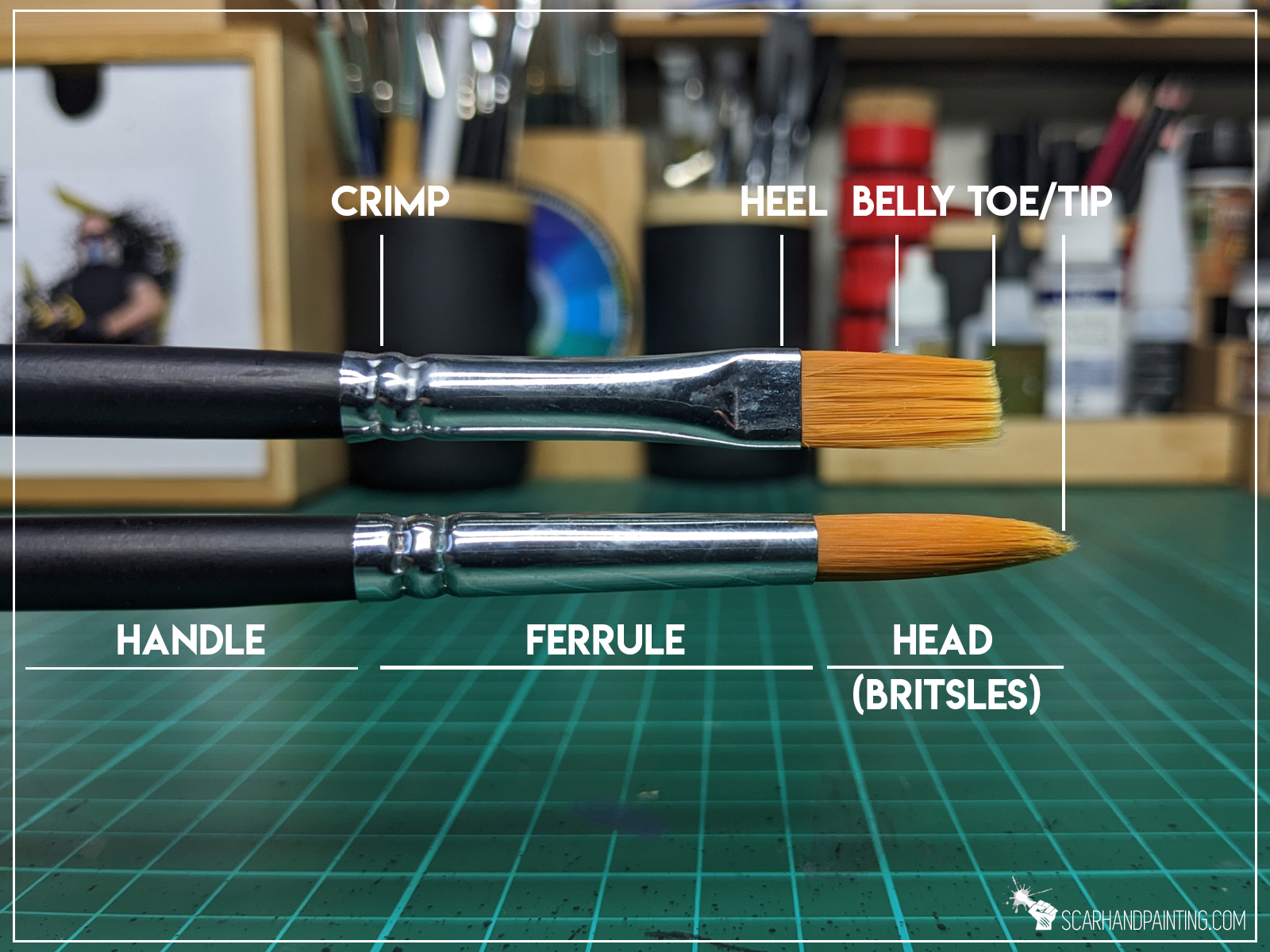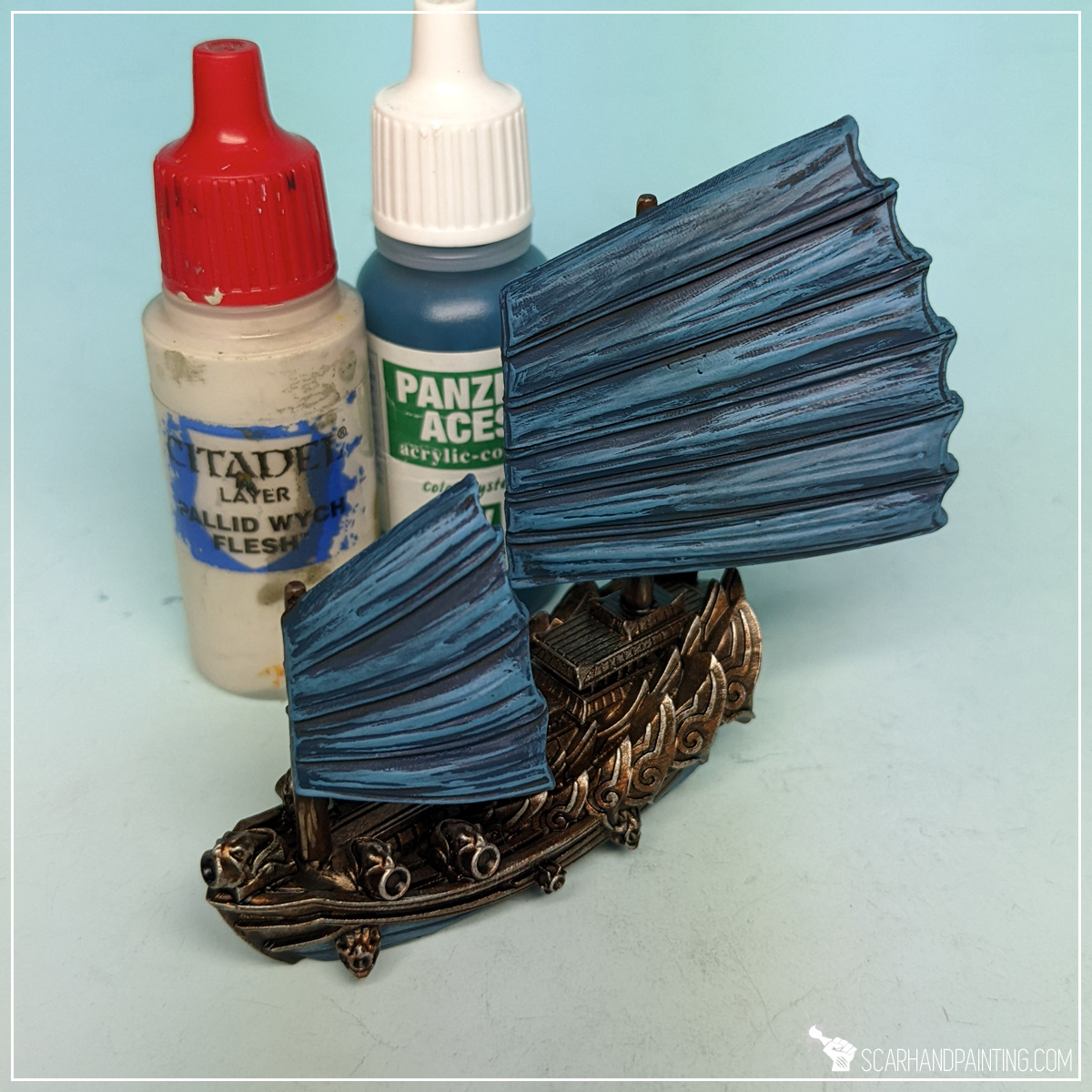- contact@scarhandpainting.com



Welcome to another entry in the ‘Painting Philosophy’ series, where I let you in on ‘how’ and especially ‘why’ I do some things in a certain way. In my opinion a proper approach to painting is crucial to maintain a healthy, rewarding experience and to produce satisfactory results. Today I will focus on a technique that, for lack of a better term, I refer to as “Flatbrush “.

Contrary to what the nickname suggests the flatbrush technique does not require an actual flat brush. The technique, as I see it, revolves around applying a highlight with multiple single direction movements using the belly of the brush. In a way it is similar to drybrushing, except the paint is usually semi-moist and bristles are held highly inclined towards the painted surface, rather than perpendicular. As a result a smooth, solid layer of paint is applied to any exposed areas, leaving any perpendicularly positioned recesses unpainted.

The flatbrush technique works best with well pigmented, standard density paints, such as Citadel metallic, layer, base colors, regular and metallic Army Painter, Vallejo Game Color and Model Color including metalic range, regular and metallic P3… the list goes on. Due to low or high density any washes, inks, air series, most special effects etc. will not work well with flatbrush. Some high density paints such as Citadel Dry, or just your standard but a bit old partially dried paints, can still be used while thinned slightly.
The key is to get just enough paint on the brush to be able to apply a semi-moist, smooth layer on the miniature, rather than overflowing the detail and recesses. For that purpose, in order to control the volume of paint on the brush, I very much recommend a dry palette. This does not to be anything special. An old CD, or a lacquered piece of paper will do.



The process itself is very simple. Once there’s just enough paint on the brush (no longer flows) I use multiple, soft, one direction moves to highlight particular parts of a miniature. I try to paint with the belly of the brush and in order to avoid the tip being too aggressive with recesses, I keep the belly of the brush inclined towards the painted surface.

Extra Tip: In order to stabilize my hands during painting, I usually keep both of my wrists supported on the edge of a painting desk. However flatbrush does not necessarily require much precision. On some occasions, depending on particular surface being painted, the movement of the brush comes from the entirety of the hand, rather than wrist and fingers. (Learn more about hands stabilization in The Way of the Brush article here.)

I’ve been painting miniatures for over two decades now. Sometime along the way the flatbrush technique developed itself as a tool to apply initial highlights in timely fashion. It is a simple, fast and very rewarding technique, that produces nice effect. Maybe it comes at a different name. Maybe it is widely implemented or even just a part of another painting technique. I don’t know as I failed to find much about it. Either way I’m sharing my take on flatbrush, because I refer to it a lot in Scarhandpainting articles. At least now you know what I mean by that.











I hope you find this tutorial interesting. Be sure to let me know your thoughts in the comments below or via Facebook or Instagram. I would also appreciate if you considered sharing this content with your friends, who might find it useful. Finally if you are looking for a professional Warhammer miniatures painting service, be sure to contact me with this contact form. I always reply within 24 hours, after which please check out your spam folder.